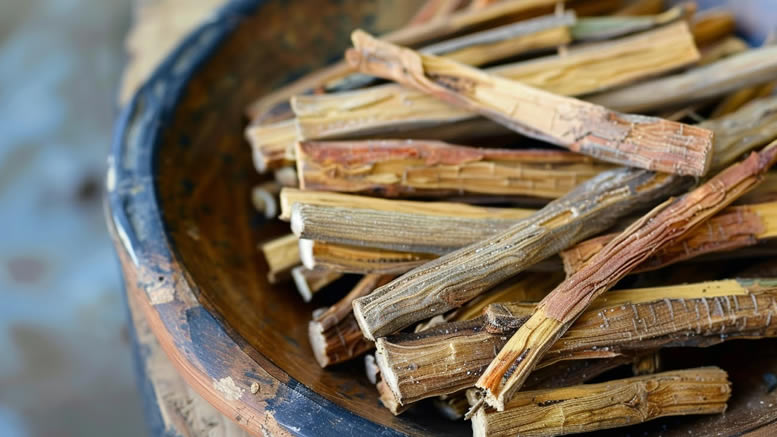Cassia, also referred to as Chinese Cinnamon, is extracted from the aromatic bark of the evergreen cassia tree. In comparison to traditional cinnamon, cassia possesses a bolder and less delicate flavor profile, making it a distinctive spice in Asian cuisine. Its origins trace back to regions like China, Vietnam, and Indonesia, with Chinese cassia known for its slightly milder aroma.
Highly valued for its robust taste, cassia bark finds widespread use as a flavoring agent in cooking, particularly in Asian culinary traditions. Its pungent notes add depth and complexity to a variety of dishes, ranging from savory to sweet. Across Asia and even in southern European cuisines, cassia remains a popular and essential ingredient, contributing its unique essence to diverse gastronomic creations.
Cassia pairs wonderfully with a variety of Asian dishes and ingredients, adding depth and warmth to many culinary creations. In Chinese cuisine, cassia is a key ingredient in five-spice powder and is often used to flavour braised dishes, such as braised pork belly (hong shao rou) and duck. It complements ingredients like star anise, cloves, and Sichuan peppercorns, enhancing the complexity of the dish. In Indian cuisine, cassia is commonly used in garam masala and curry powders, imparting a sweet-spicy note to dishes like biryanis, curries, and masalas. It pairs well with ingredients such as cardamom, cumin, and coriander. In Vietnamese cuisine, cassia is used in pho broth, where its sweet, aromatic profile balances the savoury and umami flavours of the soup. Additionally, cassia can be used in Thai desserts, such as sticky rice with mango, adding a hint of spice that elevates the overall flavour profile. Its versatility makes cassia an excellent addition to many Asian culinary traditions, enriching both sweet and savoury dishes with its distinctive taste.
Storage and Use
When purchasing cassia, also known as Chinese cinnamon, you can choose between whole sticks and ground cassia, both of which are typically found in the spice section of supermarkets. Fresh cassia sticks, which are thicker and coarser than true cinnamon, offer a robust, warm flavour with a slightly spicy undertone. They are ideal for recipes requiring a long infusion time, such as slow-cooked stews, soups, and mulled drinks. Fresh cassia sticks should be stored in an airtight container in a cool, dark place, where they can retain their potency for up to a year. Ground cassia, on the other hand, offers the convenience of easy measurement and immediate incorporation into recipes. It is perfect for baking, quick seasoning, and spice blends. However, ground cassia has a shorter shelf life compared to whole sticks and should be used within six months for optimal flavour. Both forms have their merits: fresh cassia sticks are preferred for their enduring aroma and versatility in long-cooked dishes, while ground cassia is valued for its convenience and ease of use in everyday cooking.

